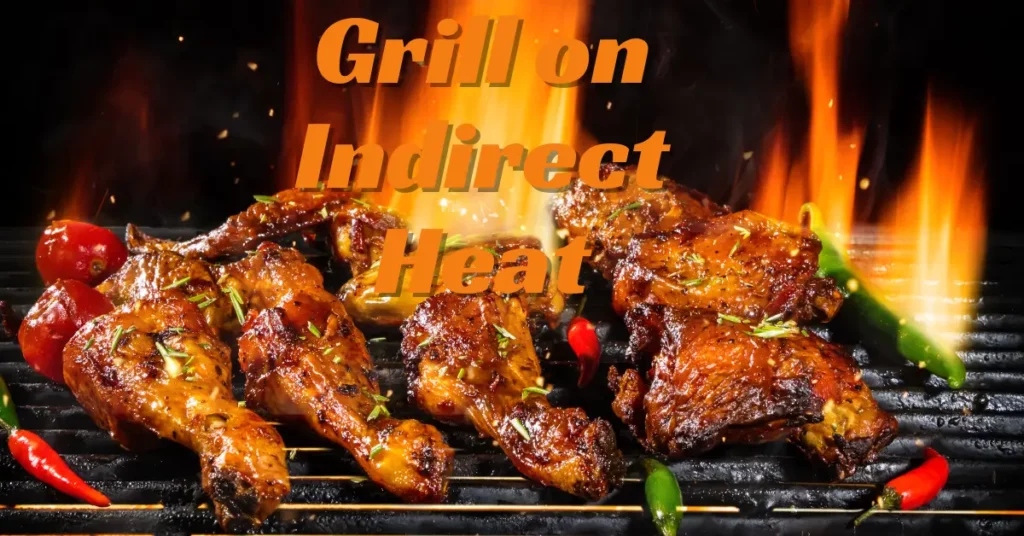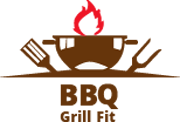This post may contain affiliate links. If you use these links to buy something we may earn a small commission. Thanks.
Grilling is often associated with sizzling flames and intense heat, but mastering indirect heat grilling is what separates the weekend griller from the pitmaster. Indirect heat grilling is a technique that allows for slow, even cooking, making it ideal for large cuts of meat, whole poultry, and delicate foods that might burn over direct flames.
Whether you’re using a gas, charcoal, or pellet grill, learning how to harness indirect heat can elevate your BBQ skills and result in juicier, more flavorful dishes. In this guide, we’ll explore how to set up your grill, key techniques, cooking times, and expert tips to help you get the best results.
Understanding Indirect Heat Grilling
Before diving into the setup, it’s essential to understand the difference between direct and indirect grilling:
- Direct Heat: Food is placed directly above the heat source. This method is best for fast-cooking foods like burgers, steaks, and hot dogs.
- Indirect Heat: The heat source is on one side of the grill, while the food is placed on the other, allowing it to cook slowly and evenly. This technique is ideal for larger cuts like whole chickens, ribs, roasts, and even delicate fish fillets.
Indirect heat prevents excessive charring and allows flavors to develop more thoroughly. It’s also the best way to cook tougher meats that benefit from low-and-slow cooking.

Setting Up Your Grill for Indirect Cooking
The way you set up your grill for indirect cooking depends on the type of grill you have. Below are the specific setups for gas, charcoal, and pellet grills.
For Gas Grills:
- Preheat the grill by turning on all burners for about 10–15 minutes.
- Turn off one or more burners depending on your grill’s size. The unlit area is where you will place the food.
- Place a drip pan under the grates of the unlit side to catch drippings and prevent flare-ups.
- Adjust heat as needed, maintaining a temperature range of 250°F–350°F depending on the food.
For Charcoal Grills:
- Light your charcoal using a chimney starter or lighter cubes.
- Move the coals to one side of the grill (or both sides with a gap in the middle for two-zone cooking).
- Place a drip pan under the grill grates on the opposite side to catch drippings.
- Close the lid and adjust the air vents to control the temperature.
For Pellet Grills:
- Set the grill to your desired temperature. Pellet grills naturally use indirect heat due to their design.
- Add wood pellets for smoke flavor, enhancing the taste of your food.
- Place food on the grill and close the lid, letting it cook low and slow.
Each grill type requires slight adjustments, but the principle remains the same: the food should not sit directly over the flames.
Essential Techniques for Indirect Grilling
Now that your grill is set up, mastering these techniques will ensure perfect results every time:
1. Preheat Your Grill Properly
Even with indirect heat, preheating your grill is essential. This ensures even cooking and prevents sticking. Preheat for at least 10–15 minutes before adding food.
2. Use a Meat Thermometer
Cooking with indirect heat takes time, and guessing internal temperatures can lead to undercooked or overcooked meat. A digital meat thermometer is your best friend. Here are some general guidelines:
- Chicken (whole or parts): 165°F
- Pork (shoulder, ribs, tenderloin): 145°F (for tender cuts) to 195°F (for pulled pork)
- Beef (roasts, brisket): 130°F–135°F (medium-rare) to 203°F (for brisket)
3. Keep the Lid Closed
One of the most common mistakes is constantly opening the lid to check the food. Each time you do, you let out heat, slowing down the cooking process. Keep the lid closed as much as possible and only open it when necessary.
4. Add Wood Chips or Chunks for Flavor
For a smoky flavor, add wood chips (for gas and charcoal grills) or wood pellets (for pellet grills). Soak the wood chips in water for about 30 minutes before adding them to the grill to prevent quick burning.
- Best woods for smoking:
- Hickory: Strong, bacon-like flavor (good for pork and beef)
- Apple: Sweet and mild (great for poultry and pork)
- Mesquite: Bold, earthy taste (best for beef)
- Cherry: Slightly sweet and fruity (great for all meats)
5. Use a Drip Pan to Prevent Flare-Ups
A drip pan under the food helps catch juices and prevents flare-ups. You can even add liquid (water, broth, or beer) to the pan for added moisture and flavor.
Cooking Times and Temperature Guidelines
The right temperature and cooking time depend on the food you’re grilling. Here are some general guidelines for indirect grilling:
- Whole Chicken (4–5 lbs): 250°F–300°F for 1.5–2 hours
- Ribs (Baby Back): 225°F–250°F for 4–5 hours
- Pork Shoulder: 225°F–250°F for 8–10 hours
- Beef Brisket: 225°F for 10–16 hours
- Salmon Fillet: 275°F for 30–45 minutes
When cooking large cuts, consider using the reverse sear method—starting with indirect heat until the meat is nearly done, then searing it over direct heat for a flavorful crust.
Common Mistakes to Avoid
Even experienced grillers can make mistakes when using indirect heat. Here are a few common ones to watch out for:
- Opening the Lid Too Often: This lets heat escape and increases cooking time.
- Placing Food Too Close to the Heat Source: Even indirect heat can be intense. Keep food positioned in the cooler zone.
- Not Monitoring Internal Temperatures: Always use a meat thermometer to ensure perfect doneness.
- Skipping the Resting Period: Rest meat for at least 10–15 minutes after cooking to retain its juices.
Final Tips and Serving Suggestions
- Resting Meat Before Slicing: Always let the meat rest to allow juices to redistribute.
- Pairing with Complementary Sides: Serve with grilled vegetables, coleslaw, or baked beans.
- Experimenting with Rubs and Marinades: Enhance flavors with dry rubs or marinades before cooking.
Conclusion
Indirect grilling is a game-changer for BBQ lovers. It allows for even cooking, prevents burning, and brings out incredible flavors in large cuts of meat. By setting up your grill properly, using a meat thermometer, and managing heat zones effectively, you can achieve restaurant-quality BBQ at home.
Now that you have the knowledge, it’s time to fire up your grill and put these techniques to the test! Happy grilling.
